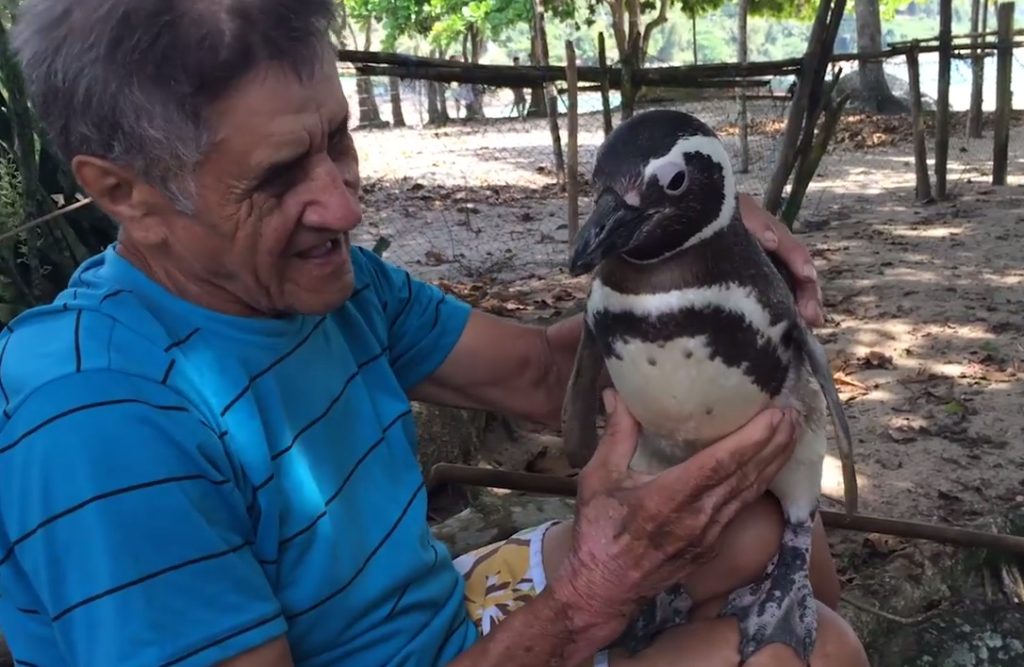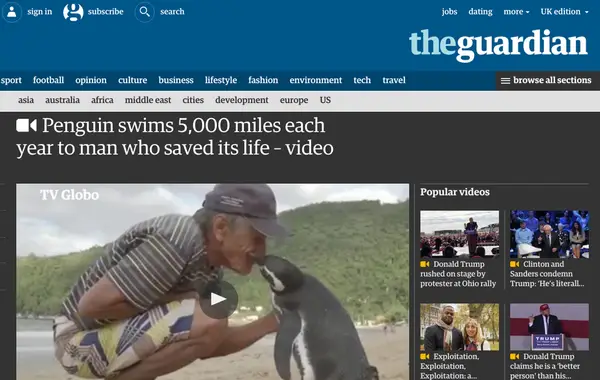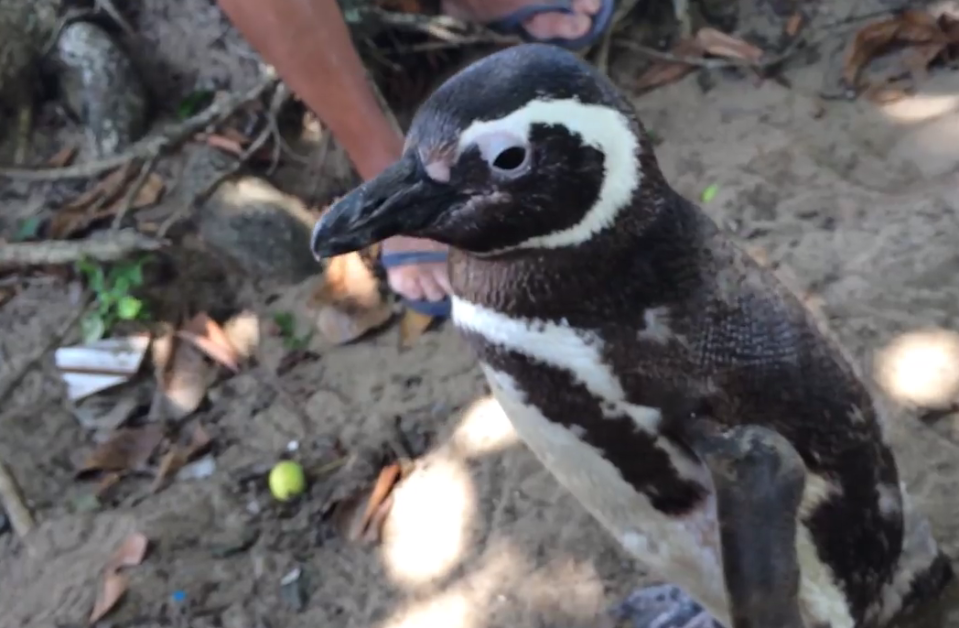Why everybody loves penguins?
We continue with our series about funny and incredible facts about these birds and their encounters with humans writing about another penguin that prefers sunny beaches than ice, Dindim, a Magallanic Penguin.
Magellanic penguins
Magellanic penguins are known for their charming personalities and distinctive markings. Found along the coasts of Argentina, Chile, and the Falkland Islands, these birds are considered a vulnerable species due to the threats posed by climate change, overfishing, and pollution. However, amidst the challenges faced by these penguins, a heartwarming story emerged about one penguin’s remarkable journey and the bond he formed with a human friend. This is the story of Dindim, the Magellanic penguin who captured the hearts of millions around the world.
The Story of Dindim and João

Dindim’s story began in 2011 when a retired bricklayer named João Pereira de Souza found him stranded on a beach near his home in Rio de Janeiro, Brazil. Dindim was covered in oil and struggling to survive. João cleaned him up, fed him, and nursed him back to health. Over time, the two developed an incredible bond. Dindim would return to João’s backyard every year, and the two would spend several months together before Dindim embarked on his annual migration to the Patagonian coasts of Argentina and Chile.
Dindim’s migration patterns were unusual for a Magellanic penguin, as they typically do not travel as far north as Brazil. However, Dindim’s strong bond with João motivated him to make the journey every year. In 2016, Dindim did not return to Brazil, and João feared the worst. However, to his surprise, Dindim reappeared in his backyard a few months later, as if nothing had happened. Dindim’s remarkable ability to navigate his way back to João’s home despite the vast distances and unpredictable ocean currents amazed scientists and penguin enthusiasts worldwide.
The story on the media
In an interview with The Guardian, Joao shared that he was amazed at how Dindim recognized him even after months of being away. The interview also revealed that Dindim is known to be quite picky when it comes to food and only eats the fish that Joao gives him.
Another interesting fact is that Dindim has been known to act as a “wingman” for Joao, bringing him female penguins to mate with. It’s almost as if Dindim is returning the favor for the kindness that Joao has shown him.

Their story has been featured in more media, including BBC, National Geographic, and The Huffington Post, among others. The heartwarming tale of Joao and Dindim is a reminder that animals have emotions too and can form deep connections with humans.
Interestingly, Dindim is not the only penguin that Joao has helped. In an interview with Globo TV, Joao revealed that he has helped over 90 penguins in the past. It’s clear that Joao has a special place in his heart for these adorable creatures and is doing everything he can to help them.
Miss Reported in the media too.
While reading more about this story we founded on social media we spotted some differences between media and it looks like reality when gained momentum to become viral got fake facys added.
João Paulo Krajewski, a biologist who filmed the original news report, has posted on Facebook about the number of errors that have crept into the coverage in recent days since the story blew up
“I am happy to see the story I presented spread all over the world, but I am also concerned by the amount of misconceptions spread”
João Paulo Krajewski
He says that contrary to many reports, Dindim doesn’t swim 5,000 miles every year.

The Life of Magellanic Penguins
Magellanic penguins are medium-sized penguins that stand about 24 inches tall and weigh around 10 pounds. They have distinctive black and white markings on their faces and bodies, with a black band that runs across their chest. Magellanic penguins are found in large colonies along the coasts of Argentina, Chile, and the Falkland Islands, where they feed on anchovies, sardines, and squid.
Magellanic penguins typically breed from September to December and lay two eggs per nest. The parents take turns incubating the eggs, which hatch after about 40 days. After hatching, the chicks are cared for by their parents until they are ready to fledge
Habitat and Diet
Magellanic penguins are found primarily along the southern coasts of Argentina, Chile, and the Falkland Islands. They inhabit a range of environments, including rocky and sandy beaches, cliffs, and grassy areas. They are able to adapt to different habitats, although they prefer to nest in areas with a moderate amount of vegetation.
Magellanic penguins are opportunistic feeders and consume a variety of prey, including anchovies, sardines, squid, krill, and crustaceans. They are also known to eat other small fish and even octopuses.
Threats to Dindim and Other Magellanic Penguins
Magellanic penguins face a number of threats to their survival. One of the primary threats is oil spills, which can coat their feathers and cause them to lose their insulating properties. This can lead to hypothermia and death. Additionally, overfishing of the penguins’ food sources, climate change, and habitat loss due to human activity are all factors that contribute to the decline of the Magellanic penguin population.

